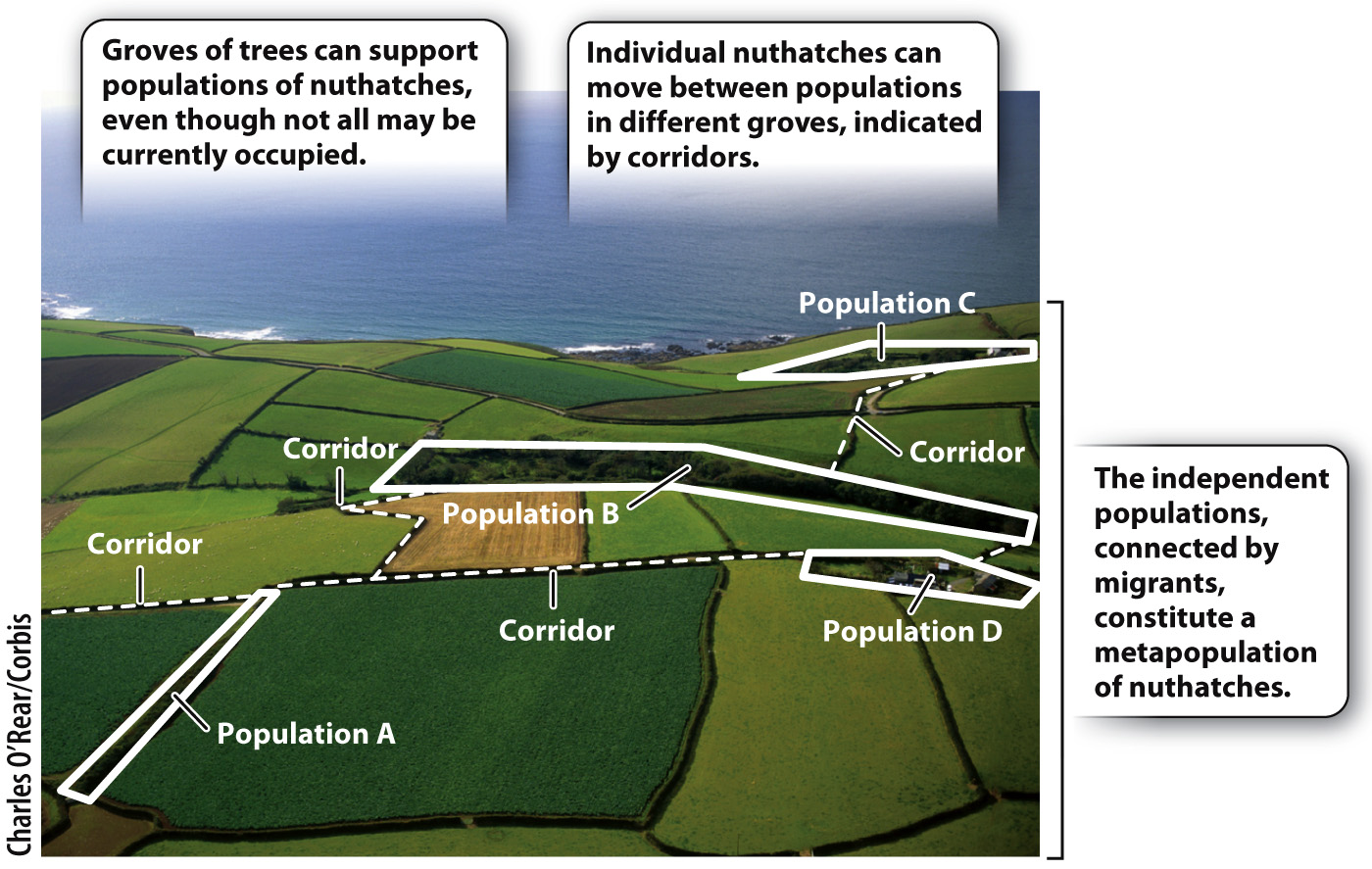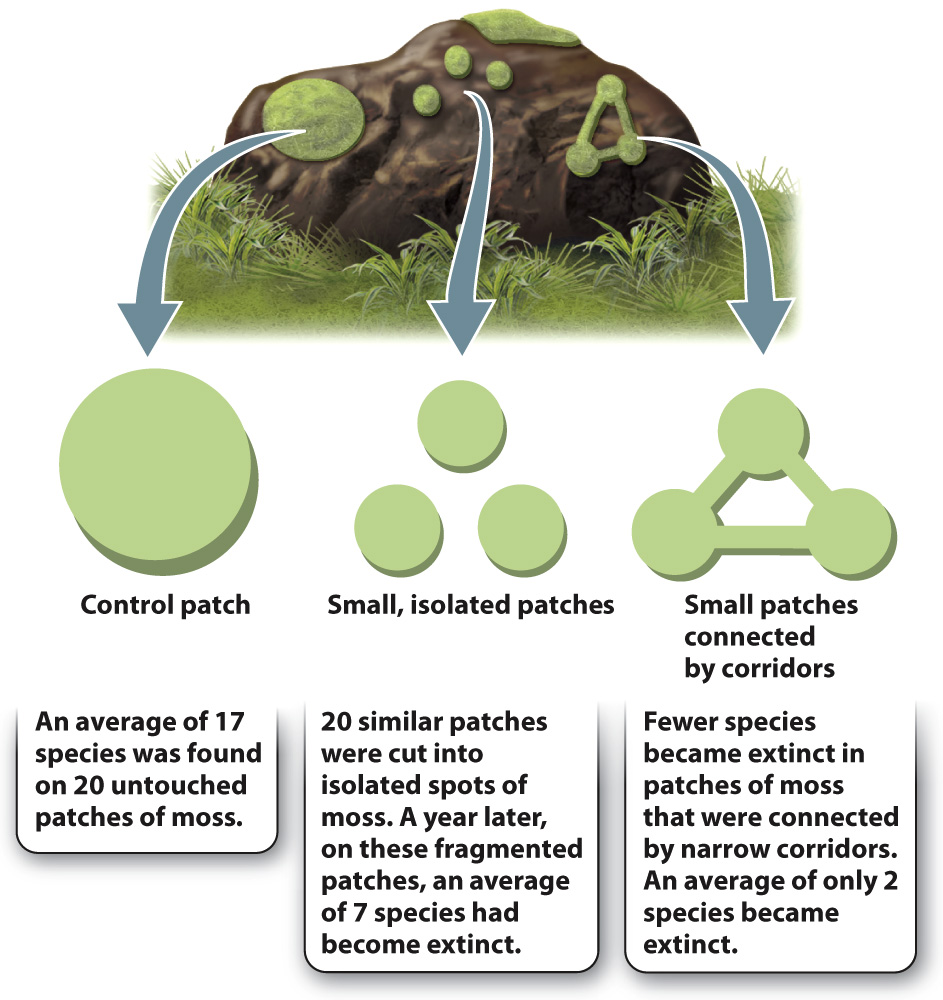A metapopulation is a group of populations linked by immigrants.
Groves of trees, separated from other groves by fields, are patches of habitat for the birds, insects, and fungi that rely on them for food and shelter. Similarly, humans are patches of habitat for infectious viruses and certain bacteria; coral reefs are patches for fish; and mountaintops are patches for mountain goats and other high-
The nuthatches that occupy a particular tree grove interact with one another more frequently than they do individuals of other tree groves, and so each group is considered a local population. Occasionally, a few migrants move from grove to grove, enabling gene flow between local populations. We can think of local populations of nuthatches in separate tree groves as parts of a larger, more inclusive group called a metapopulation. A metapopulation is a large population made up of smaller populations linked by occasional movements of individuals between them (Fig. 46.13).

In order to understand the dynamics of populations, then, we must consider not only the birth and death of individuals, but also the colonization and extinction of local populations. Local populations within a metapopulation have independent fates and commonly become extinct because of their relatively small sizes. In general, small populations become extinct more often than large populations because they are more susceptible to random factors that increase mortality, such as weather, natural disasters, or predation. For example, a nest of predators can eliminate a prey species locally; or, if population density falls too low in a small local population because of disease or lack of resources, survivors may not be able to find each other for mating. However, as long as some local populations remain—
Experiments with patches of moss growing on boulders showed that the size and connectedness of the patches of moss affected the probability that species of arthropods inhabiting the moss would become extinct (Fig. 46.14). Researchers cut large patches of moss into several small fragments and sampled the number of insect species in each patch over time. As expected, isolated patches showed decreases in species diversity, up to 40% in 1 year; some species became extinct. However, when nearly isolated moss patches were left with a narrow corridor of moss connecting them, the rate of extinction was lower. Even narrow corridors of suitable habitat can allow species to move between patches of habitat and prevent extinction, or serve to reintroduce species that become locally extinct.

In a world increasingly marked by habitat fragmentation caused by human activities, studies of metapopulations are playing an important role in conservation biology (Fig. 46.15; Chapter 49). Species survival depends not only on the health of local populations, but also on the ability of individuals to colonize new habitat patches. As the simple experiment with mosses shows, corridors that connect endangered populations can dramatically increase the probability that a species will survive. However, corridors are important only to species that use them to cross barriers between patches. For species like ferns that produce spores able to float between patches on breezes, corridors may not be as important to patch colonization. Dispersal ability differs among organisms, strongly influencing their capacity to colonize distant patches. Some patches or islands may be so far separated (impairing the ability to disperse) that their populations acquire new mutations, and eventually become reproductively isolated from one another and are considered separate species (Chapter 22).
